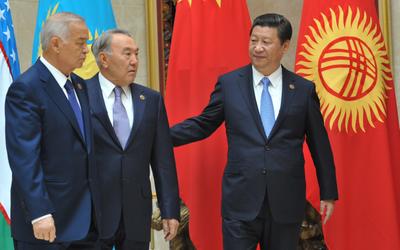The PRC’s energy demand is expected to expand by a further 75 per cent over the next two decades, and the country has turned to Central Asia to support this transition for two reasons. First, the PRC hopes to compete aggressively for its own energy security through ‘energy diplomacy’ with the region. This would allow the PRC to access a more stable and proximate source of energy. Second, by developing close ties with Central Asia, China wants to deter threats from separatist activists in the Xinjiang Uyghur Autonomous Region, which borders the Central Asian republics.
The connection between Central Asia and China dates back to the time of the Silk Road, but more recently China has increased its investment in the region by building roads and tunnels in Tajikistan, developing the oil sector in Kazakhstan and constructing a 1,800-kilometre natural gas pipeline from Turkmenistan. Trade between China and the five Central Asian countries rose from US$527 million in 1992 to US$40 billion in 2011. Major PRC oil companies like CNPC and CNOOC have partnered with local companies to compete with other major players (like Russia) and multinational companies, such as ExxonMobil and BP, in exploration ventures and the extraction of oil and natural gas.
In particular, Chinese energy companies have been investing in Kazakhstan, where СNРС acquired 60.3 per cent of shares in the Kazakh oil company Aktobemunaigaz in 1997. CNPC later bought out the company and re-established the business as СNРС–Aktobemunaigaz. In addition, CNPC is negotiating to buy a 49 per cent minority stake in Kazakhstan’s Mangistaumunaigaz AO Company. This deal would give the PRC control over about 15 per cent of Kazakhstan’s total oil output.
The discovery of Kazakhstan’s giant Kashagan oil field in 2000 led some to claim that it may be ‘the largest oil discovery anywhere in the world in the past 20 years’ — and it also prompted China to recommit to building a Kazakhstan–China pipeline. As a result, the easternmost part of the pipeline, running 988 kilometres from Atasu in Kazakhstan to Alashankou on the Chinese border, was completed at the end of 2005 and began operating in May 2006.
The Central Asia–PRC gas pipeline — spanning Turkmenistan, Uzbekistan and Kazakhstan, and entering China through the border town of Horgos in Xinjiang — had the capacity to transport 40 billion cubic meters (bcm) of natural gas per year when it was first built. But given the PRC plans to increase its gas imports from Central Asia five times over by 2015, the pipeline’s capacity will soon expand to 55–60 bcm per year.
Turkmenistan is one of the world’s largest natural gas exporters and looks set to double its energy supply to the PRC in the near future. Apart from the obvious economic advantages for Ashgabat, Beijing will also benefit by securing new gas supplies and by postponing its need to deal with Iran until the political climate of the Middle East improves. Likewise, in Uzbekistan the PRC has set up more than 380 ventures using Chinese investment, and has also established representative offices for 65 large Chinese companies, among them CNPC. And by joining the Uzbekistan–PRC gas pipeline to the Central Asia–PRC pipeline the two countries have added extra momentum to their energy cooperation. Uzbekistan started to supply natural gas through this pipeline in August 2012.
As the PRC has risen to prominence within the global economy, it has brought Central Asia into its orbit through energy connections such as these. But does this mean we are now seeing a replay of the Great Game in Central Asia, with the PRC and the United States replacing Great Britain and the former Soviet Union? It is clear that the PRC has already (re)entered the game by playing aggressively to win a larger share of the energy prize in Central Asia. Meanwhile, the United States seems to have been relegated to a second-tier role — its private oil companies simply do not match up against the PRC’s powerful state-owned oil giants.
This reality will help China to solidify political stability in Xinjiang. It also means that the PRC will continue to devote its diplomatic energy to improving relations with the Central Asian republics to ensure a stable and substantial supply of oil and natural gas to the PRC.
Fakhmiddin Fazilov was a Visiting Scholar at the Center for Urban and Global Studies and Visiting Assistant Professor of International Studies at Trinity College, Hartford, Connecticut during 2011-13.
Xiangming Chen is the founding Dean and Director of the Center for Urban and Global Studies and Paul Raether Distinguished Professor of Global Urban Studies and Sociology at Trinity College, Hartford, Connecticut, and a Distinguished Guest Professor at Fudan University, Shanghai.
A longer version of this article was first published here in The European Financial Review.

